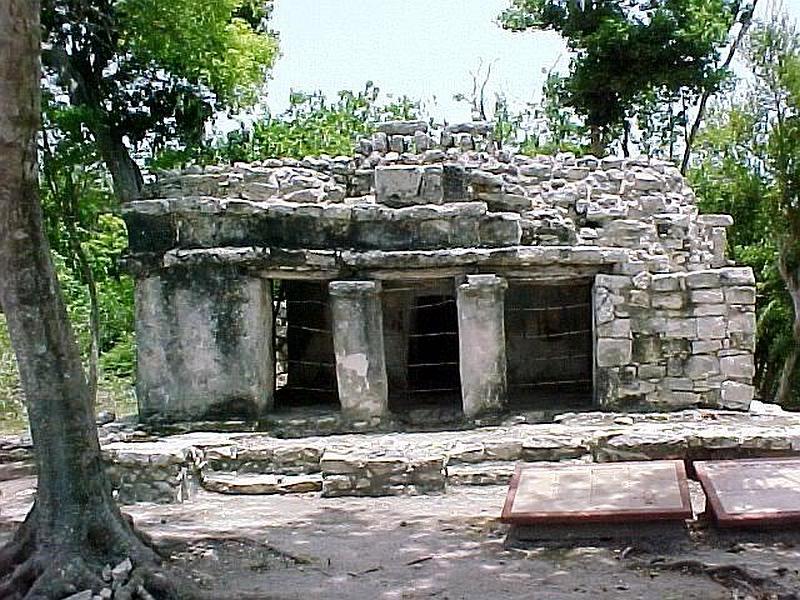Xel ha: Where the Waters Meet

Xel-Ha is another port settlement from where Mayans sailed to the nearby island of Cozumel to ask Ixchel, the goddess of fertility, for happy marriages and healthy pregnancies. Because this settlement is not directly exposed to the sea, ships launched from the small inlet, thus giving the place its name: Xel-Ha—”water entrance” (or something along those lines). These ruins are not to be confused for the famous Eco Park Xel-Ha which is right around the corner.
The structures at Xel-Ha
This is not a site that takes too long to visit, as it has only a few stone temples. The main one, El Palacio (“The Palace”) is a structure that was constructed in stages, perhaps by undecided people. New walls were added and removed; new rooms were opened and closed as minds were changed during different times.
Xel-Ha’s painted murals
The painted murals are more attractive than the structures. Two main ones portray different scenes in an interesting variety of bright colors, such as reds, blues, yellows, and even whites and blacks. There are human-shaped figures, in ceremonial dresses and jewelry, and animals, such as parrots.
Other structures
Xel-ha has a miriad of sacbes, the Mayan version of roads. These are open to the public. It’s always interesting to follow in the footsteps of Xel-Ha’s ancient inhabitants, winding around the jungle.
Xel-Ha has two freshwater cenotes. Which were probably used as water storage for use in agriculture.
Making a day out of Xel-Ha
Xel-Ha Eco Park is right across the road from here. It’s common for visitors to spend the rest of their day there once they’re done with the ruins for a different kind of fun. Or, you could leave here and go visit Tulum and Muyil, as well. The short distances allow for a whole day hunting Mayan ruins.
